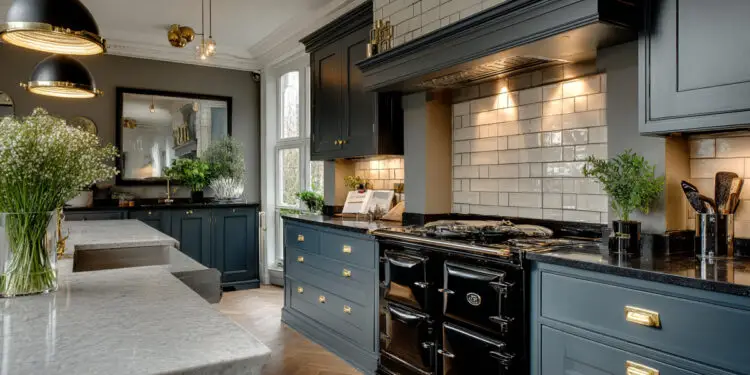How to Design a Kitchen That Balances Modern Style With Classic Appliances

Kitchens. The word itself stirs up images: gleaming surfaces, the quiet hum of old machinery. Plenty chase after a sleek, modern look, forgetting entirely about the soul: classic appliances can lend a room. And yet, is there a real necessity to surrender charm for efficiency? One glance at glossy magazine covers would say yes—brands want it all chrome and glass. Nonsense. The space deserves better than to be reduced to a sterile showroom. The challenge is to find a way to nestle beloved classic appliances alongside sharp new finishes without descending into chaos or creating a museum-like gloom. There’s a method behind this madness, but it’s not what most expect.
Keep the Heart: Celebrating Timeless Appliances
Let’s dispel a common misconception: placing an Aga cooker prominently does not condemn a kitchen to a rustic or outdated aesthetic. It’s quite the opposite—this kind of centrepiece draws attention with its striking form and reassurance of tradition. Place that stately stove beneath simple pendant lights; suddenly it’s less relic and more focal point. Think clean cabinetry around rugged iron curves, slab worktops brushing up against trusty enamel doors. Resist matching every surface slavishly to “the modern moment”. Instead, let contrast breathe; let function help dictate layout rather than obsessing over uniformity for its own sake.
Materials That Talk
Marble meets butcher block—now that’s where things get interesting. All sleek stainless steel? Everyone’s seen it before, and nobody remembers it afterwards anyway. Appliance handles made from polished brass can sit beside matte-finish cabinet pulls if chosen well; wood grains breaking up runways of tile impart warmth no digital rendering can quite capture. Designers might yawn at this sort of mix-and-match, muttering about cohesion until blue in the face, but real personality comes from tension between the eras. Embrace subtle nods—a hint here, a flourish there—instead of chasing after some lifeless catalogue spread.
Technological Touches with Restraint
Here’s where many trip over themselves: cramming in gadgets because they’re shiny rather than necessary. Some technology is appropriate—induction hobs provide efficient cooking when gas isn’t practical, and under-cabinet lighting ensures safe food preparation as the nights fall early during the winter months—but are smart fridges that double as art installations necessary? Often, they’re just more trouble than they’re worth once novelty fades away and fingerprints multiply ruthlessly across screens. Keep in mind the scale: a classic statement should have sufficient space, not constantly be competing with garish LED strips or blinking touchscreen panels.
Unifying Through Colour and Light
Many people stress with shades these days—white throughout is supposed to represent sophistication but frequently ends up frigid, while black risks feeling weighty unless balanced by reflection and brightness elsewhere. Instead of covering every inch with complex patterns, choose two or three major colours—deep blue and clean grey—and allow accents to gently lift through tiles or feature walls. Lighting solves more problems than people realise. Position task lamps above workspaces while softening shadows in corners, so even older appliances seem newly considered amid all their contemporary counterparts.
Conclusion
There lies the magic trick, then—not subtraction but thoughtful layering built on respect for both heritage pieces and smart progressions forward. A kitchen shouldn’t erase history or ignore clear improvements simply because trends demand either total overhaul or freeze-frame nostalgia forevermore. When detail meets discipline without fear of creative dissonance, rooms come alive rather than stiffen into museum-quality dioramas nobody dares use daily or, worse still, evaporate into clinical blandness stripped bare by passing fashion trends alone.










